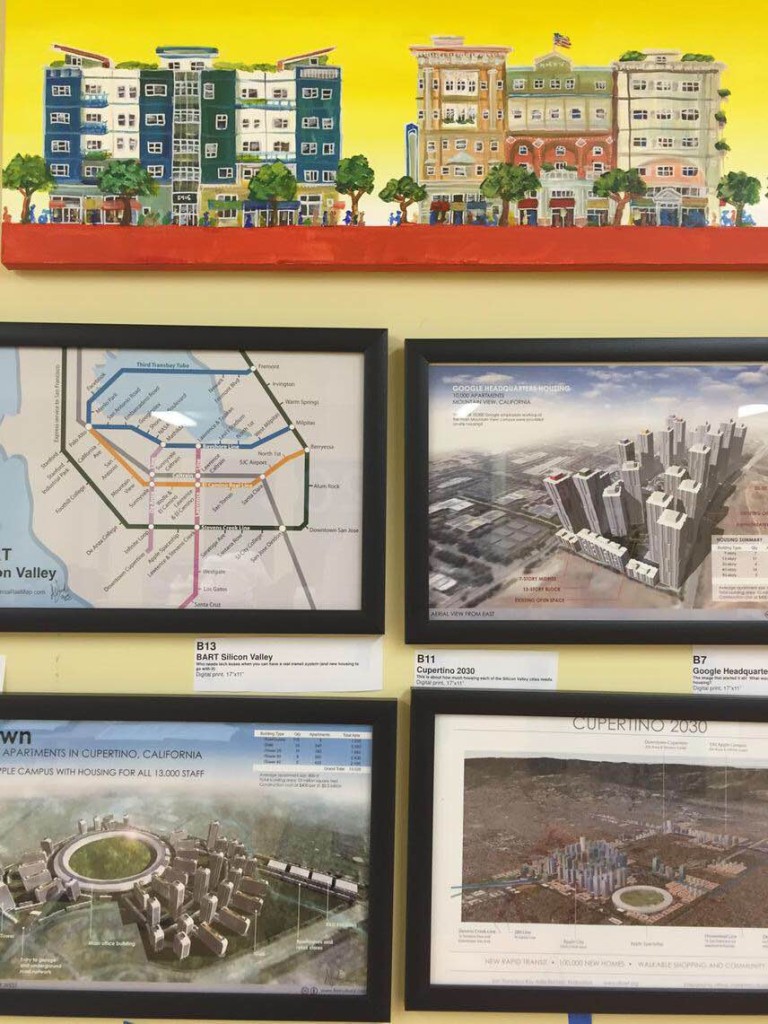[originally posted to discussion list of SFBARF, San Francisco Bay Area Renters Federation]. Today’s Vice article on SF housing (“Nobody Can Figure Out How to Fix San Francisco’s Housing Crisis” by George McIntire) does a good job articulating some different points of view. Including, I was glad to see, prominent Berkeley regional/urban economist Enrico Moretti, who bluntly summarizes expert opinion & evidence on housing markets thus:
“a growing and homogenous body of academic research…points exactly to the opposite [of the pro-moratorium argument]. If you allow market-rate housing in a city you experience lower increases in rent.”
On the other hand, I am somewhat disappointed to see a familiar, tech-vs-the-city, xenophobic-tending frame, ie the primary causal factor described as: “The city has been overrun by young tech workers… transplants.” ..as if job and economic growth, new in investment and venture formation, and the attraction of talented, aspiring people aren’t generally signs of a flourishing, high-opportunity, open city — and key aspects of what most cities in the world are aspiring to.
As if the city is merely a victim of this tremendous prosperity, and powerless to use its great wealth to address attendant problems and shape itself. As if you can attribute this situation just to newcomers, without reference to, say, the immense tangle of property/tax/land-use restrictions and housing/transport underinvestment accumulated over decades.
What most strikes me about the article in fact, is the pervasive sense of resignation, and conventionality/insufficiency of almost every response cited, except for [SFBARF founder Sonja] Trauss’ observation that “no one really seemed to be taking seriously that we need a massive influx of units.” It goes from the title, “Nobody Can Figure Out How to Fix San Francisco’s Housing Crisis”.. to USF’s Corey Cook in closing saying that it could only be addressed by massive Fed/state/local public investment “much of which will not be forthcoming.”
The article observes that even if you take SF Supervisor David Campos’ most extreme stated goals, e.g. to focus all housing bond spending on his own Mission district, this translates to only a few hundred new housing units, while he cites CCHO/MEDA’a estimate of out-migration of over 8,000 mostly lower-income Latino residents from the district in the last 10 years. Surely “affordable housing” can’t be equated just to finding large new subsidies to build, in the current conventional and extremely slow & costly way, quantities of housing that, as McIntire says in the Vice article, are “not enough to have widespread effects.” Isn’t insanity is doing the same thing over and over and expecting different results? (& status-quo politics, doing the same thing, for the same results..).
It really puzzles me how a city and region so globally/ and self-renowned for bold progress and creativity, in so many areas, could seem to be so largely paralyzed and unimaginative regarding its current most urgent and discussed problem. Resignation, or even thinking no fundamental reform is possible, is in my opinion effectively a political choice to accept current power-holders, outcomes, and unwanted trajectories.
 SFBARF is currently offering a shining example of how to think big, bold, and different, with the exhibit of Alfred Twu’s artwork (photo of exhibit at left). In turns subversive, charming, humorous, surreal, and matter-of-fact, Alfred’s work envisions a boldly adapting, growing, & welcoming Bay Area. (photo from exhibit attached. Come see, and buy, online or until July 24 at 1920C in Chinatown. Or, DONATE to SFBARF crowdfunding campaign at http://tilt.tc/QjGw.)
SFBARF is currently offering a shining example of how to think big, bold, and different, with the exhibit of Alfred Twu’s artwork (photo of exhibit at left). In turns subversive, charming, humorous, surreal, and matter-of-fact, Alfred’s work envisions a boldly adapting, growing, & welcoming Bay Area. (photo from exhibit attached. Come see, and buy, online or until July 24 at 1920C in Chinatown. Or, DONATE to SFBARF crowdfunding campaign at http://tilt.tc/QjGw.)
We need, I believe, vision like this, to bring to the conversation proposals and plans that rise to the level of the problem, or exceed it even. While maintaining the core “ground game” of constantly and effectively engaging the planning & policy processes day-to-day, to support an open & adaptive & future-welcoming city.
But let’s also explore, what might it take to actually achieve widespread affordable/abundant housing and the city/region (& world) of our hopes and potential? If X hundred thousand units are needed, how concretely might that be done? How might it be assured that no resident would be displaced, or the city be made as (or more) open to newcomers as it ever has been in its history? What might be equivalent now to the bold crisis responses of other times, such as the massive rebuilding and rehousing after the 1906 earthquake?
I believe, with the amazing resources and creativity of this region, we should be thinking not only how can we address our own problems, but, how can we be a pioneer and model for cities everywhere facing problems of housing crisis, inequality, maladaptation, and how to achieve sustainability and human flourishing? As we are doing in ways, but can always take further! If not us, who?
Tim
—-
Tim McCormick
Houslets – user-centered living spaces – San Francisco
tjm.org houslets.com / @tmccormick @houslets

